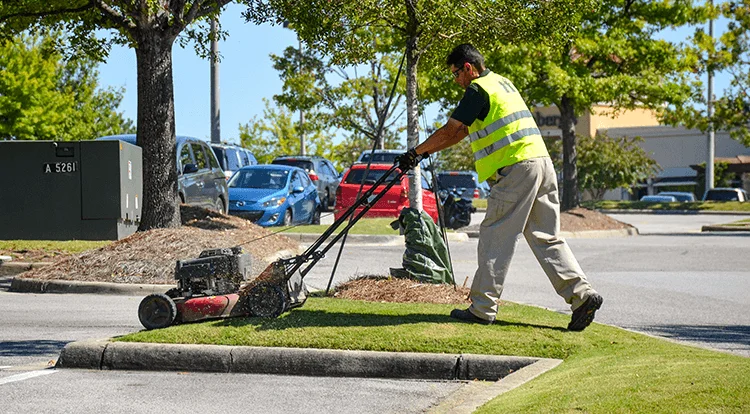Best Lawn Mowing Practices

Grass, whether it covers a large field or small patch in the parking lot, needs to be maintained. As simple as mowing grass may seem, improper mowing is actually one of the most common causes of people being dissatisfied with their property’s landscaping. Luckily, proper mowing techniques are easy to learn and implement into a successful routine. All you need is an understanding of some of the best mowing practices.
First Things First
The first thing you need to know in regards to proper mowing technique and strategy is that how and when to mow the grass depends on two major factors–the grass type and it’s growing season. The grass type determines how tall the grass should be before it’s cut, as well as the height you want to trim it down to when mowing. Grasses are also divided into two categories (cold and warm-season grasses) that describe their growth cycle throughout the year. For example, a warm-season grass, such as Bermuda, will grow faster and need to be cut more frequently when it’s warm outside.
Sorry, Jack. No Beanstalks Here
Mowing grass at its correct height is an absolutely vital part of proper mowing. It is important to avoid cutting grass too low as it can result in increased vulnerability to pests, disease, and weed germination as well as damage by heat, cold, and drought. But don’t let the grass blades get too long either. Tall blades of grass are difficult to mow and can clump together, which can result in cutting too much and causing stress and damage toward future growth.
The Rule of (the Green) Thumb
The main rule everyone needs to know is to never cut more than one-third of the grass blade height at once. After the recommended grass height is determined (based on the grass type) it needs to be one-third taller than that height before it is cut. For example, if the ideal grass height is two inches tall, it should be three inches tall before mowing it again. During its growth season, grass may need to be mowed every five to seven days to maintain optimal health. However, during periods of slower growth, it may only need to be mowed once or twice per month.
If you need help determining your property’s grass type and it’s growing season or would like to determine a maintenance routine to make sure your grass is cut effectively and efficiently, contact us! Our team of trained horticulturists across the southeast will be happy to help you determine what’s best specifically for your property’s needs.
Check back later this week to see our list of what NOT to do in regards to mowing your lawn!



































